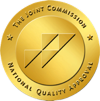Street names for illicit drugs are often used to hide the identity of the drugs they represent. “Tina,” a seemingly innocuous moniker, stands for a substance that is anything but harmless. This name, which sounds like it could belong to your friendly neighbor or a the writer of the movie Mean Girls, is actually a street term for methamphetamine, a highly addictive and destructive drug. Let’s get into everything about the Tina drug.
The Origin of the Tina Drug
Why “Tina”? Street names often arise from a need to discuss illegal substances covertly. “Tina” is derived from the last syllable of “methamphetamine” and is particularly popular in certain subcultures.
Methamphetamine goes by various other names too, such as “meth,” “crystal,” “crystal meth,” “ice,” and “glass.” Each of these names can refer to slightly different forms of the drug but are often used interchangeably.
Understanding Meth
Meth is a central nervous system stimulant. It works by flooding the brain with dopamine, a neurotransmitter that helps control the brain’s reward and pleasure centers. This surge results in intense feelings of energy, euphoria, and increased confidence. However, this is where the drug’s notorious nature lies. Its ability to take over the brain’s reward system leads to a high potential for addiction and abuse.
Initially, meth was actually used in nasal decongestants and bronchial inhalers. Imagine that — a drug now synonymous with destruction once had a home in medicine cabinets for quite benign purposes.

Tina drug meth is synthesized using a variety of precursor chemicals, some of which are found in over-the-counter medications. The process involves reducing ephedrine or pseudoephedrine into methamphetamine through a chemical reaction, often involving hazardous materials like lithium, ammonia, and red phosphorus.
This not only makes the production process dangerous but also means that the final product can contain harmful contaminants.
The Dangers of Meth Use: A Grim Reality
Meth use is far from a casual affair. It’s a drug that doesn’t just knock on the door; it breaks it down. The immediate effects might seem appealing to some: increased alertness, decreased appetite, and a sense of heightened well-being. But the long-term consequences are devastating and include severe dental problems (often termed “meth mouth”), skin sores, heart problems, increased risk of stroke, and profound psychological issues such as paranoia, hallucinations, and aggressive behavior.
Chronic use of meth can lead to a condition known as “methamphetamine psychosis,” where users experience severe psychotic symptoms kind of like schizophrenia. These can include delusions, auditory and visual hallucinations, and paranoia. Unfortunately, these symptoms can persist for months or years after methamphetamine use has ceased.
How to Tell if Someone is Addicted to Meth
Identifying meth addiction in someone can be challenging, especially in the early stages. But there are signs. The physical ones include rapid weight loss, dental decay, sores on the skin, and a generally unkempt appearance. Behavioral signs are equally telling: increased agitation, erratic sleep patterns, violent behavior, and a sudden lack of interest in activities that were once enjoyed.
One key indicator of addiction is the presence of drug-seeking behavior. This may mean you or your loved one is obsessed—constantly seeking metth, spending excessive amounts of money on it, or engaging in risky behaviors to acquire it.
The Path to Recovery from Tina Drug
Tina drug addiction, while formidable, is not insurmountable. Recovery begins with the stepping up: asking for help. Treatment typically involves a combination of behavioral therapy, counseling, and support groups. These approaches are designed to help folks understand the root causes of their addiction, develop coping strategies, and rebuild a healthy, drug-free life.
While the street name “Tina” may sound friendly, the reality of methamphetamine addiction is anything but. It’s a drug that carries significant risks and can devastate lives.
Professional Help With Addiction to the Drug Tina
Have you or a loved one been caught in Tina’s grip? It’s a tough battle, but not one you have to fight alone. At EagleCrest Recovery, we understand the complex nature of meth addiction. Our meth rehab provides compassionate, professional care to help navigate the path to recovery.
Don’t let the Tina drug define your story. Reach out to EagleCrest Recovery today and take the first step towards reclaiming your life.


